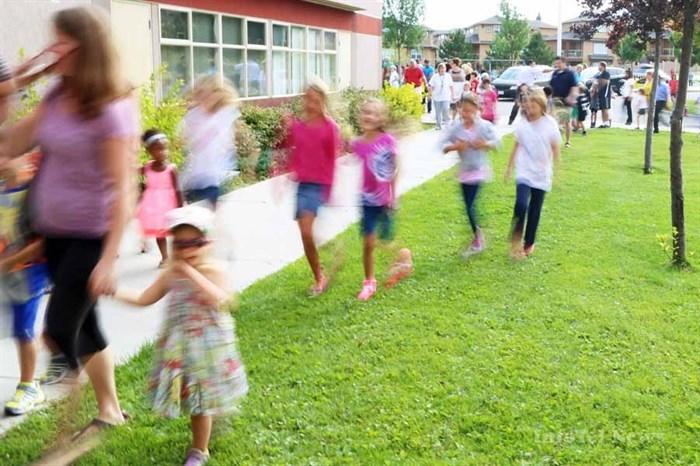
FILE.
(JENNIFER STAHN / iNFOnews.ca)
July 29, 2020 - 2:51 PM
B.C.'s school-aged children are going back to classes in September, but the union representing teachers says it's too much, too soon.
In a media release that was sent out as the press conference laying out the plan to go back to school was getting underway, the president of the B.C. Teachers' Federation advocated for a slower start.
“The reopening needs to be safe, careful, and get the buy-in of teachers, support staff, parents, and students. If the plan is rushed or too many questions are left unanswered, it won’t be successful," Mooring said in a press release.
"Bringing everyone back all at once, even with some version of a cohort model, on the first day after the Labour Day long weekend, is too much too soon given the many unanswered questions in today’s announcement."
The cohort model, as laid out by Dr. Bonnie Henry, has students and teachers in elementary and middle schools organized into learning groups of no more than 60. For high schools, the groups can be as large as 120 people.
That doesn’t mean they will all be in the same classroom together, just that they will be able to interact with their pod of students and teachers in common areas such as gyms, while outdoors and in the library.
"The idea is to manage bell times, lunchtimes and schedules so you can minimize the interaction with any other learning group," Dr. Henry said. "So that way we keep the pods, other learning groups, small."
The aim, is if and when there is a case of COVID-19, it can be isolated and dealt with quickly.
"This plan is very similar to how we have managed all along, trying to keep numbers small and manageable so we minimize the potential for transmission," Dr. Henry said. "And we also maximize our ability to efficiently find people and make sure that the transmission chains are stopped."
Dr. Henry also said that in cases where COVID-19 was brought into schools during the June trial, it was mostly done by adults and that informed part of the understanding of how this virus is shared.
Dr. Henry also said that B.C. has thus far done a good job keeping infection rates steady — despite a recent blip — and there's no magic number that will cause her to flip the switch on schools and shut them down again.
"Right now we do have an increased number of cases but we're able to link most of them to exposure events that we've had in our community and I expect that will continue," she said.
"But I will say, as well, it is the fact that everybody in B.C. has done that, has taken this seriously, has made our community transmission rates very low that reaffirms how safe it is to start things like in-classroom instruction that we have for our young people."
The unintended negative consequences of a number of the measures that we put in place in B.C., including the closure of schools, however, could be lifelong for some children.
"We know that children who have fallen behind may never make up both the economic and the educational impacts," she said.
"We know that there's been an increase in anxiety, there's been an increase in mental health issues with young people, the number of people calling children helpline, the families that have had challenges in managing the children at home. We need schools. (They) are essential to not only our economy but to our society and our community. And this is our safest way that we can move forward."
The BCTF's Mooring echoed Dr. Henry's sentiments on the importance of getting back to class but wants more safety measures in place.
The BCTF wants health and safety measures in place and tested before staff return to the school site and before students return to class.
They're also advocating for the time in September for teachers to plan, prepare, and undertake the necessary in-service training and health and safety orientations to enable equitable learning conditions and safe workplaces.
Another request is also for smaller classes to ensure all of the children, youth, and adults that share our school spaces can adhere to the physical distancing protocols we have all been asked to maintain during the COVID-19 pandemic.
Mooring asked for more clarity around the proposed “cohort model” and how that will keep teachers safe while ensuring students still get their full education.
To contact a reporter for this story, email Kathy Michaels or call 250-718-0428 or email the editor. You can also submit photos, videos or news tips to the newsroom and be entered to win a monthly prize draw.
We welcome your comments and opinions on our stories but play nice. We won't censor or delete comments unless they contain off-topic statements or links, unnecessary vulgarity, false facts, spam or obviously fake profiles. If you have any concerns about what you see in comments, email the editor in the link above.
News from © iNFOnews, 2020